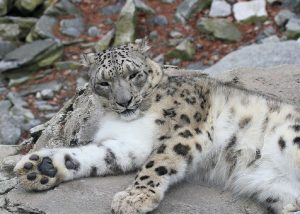Table of Contents
The Living Organisms – Characteristics and Habitats Summary/revision notes
This chapter consists of two parts Adaption of an organism and characteristic of a living organism. We will discuss as given in the book.
Adaptation:
Organisms live in a different region. It is possible because they are adapted to their environment.


Plants of the mountainous region have small and sharp leaves to avoid ice formation. Thier bodies are conical which do not allow ice to deposit on the tree.
Animals like snow leopard have thick fur which saves them from cold. Sheep have wools on their skin; yak has a lush growth of hairs on them.
Adaptation of Desert Region:
Camel has thick skin which transpires lesser than another animal. It has hump which stores water.
Desert rat and snakes make furrows deep inside the earth. It saves them from scorching heat of the sun.
Cactus leaf modifies into a spine, and the plant carries photosynthesis by their green stem.
The green stem of cactus also has a wax layer which further lowers the transpiration.
Other plants of the desert region have well-developed root.
Adaptation of Sea Organism:
Fish has gills to absorb dissolved oxygen.
Fish has a streamlined body which helps them in swimming.
Dolphins and whales have nostrils on top through which they take oxygen from the air.
Suids and octopus do not have a streamlined body, so they reside at the bottom of the sea. They change their shape to a streamlined body during swimming.
Adaptation of Pond and Lake Organisms:
Roots of the aquatic plant are either suspended in water or less developed. Their primary role is to provide an anchor only.
Stems of the aquatic plant are hollow.
Leaves of the aquatic plant either float on the surface of water or have divided into numerous small leaflets to pass water.
Adaptation of Forest organism:
Animals have faster speed like lion and deer.
Lion has front eyes to fo its prey.
Deer have a long pair of an ear to listen to the minute sound and side eyes to see a large area.
Characteristics of a living organism
An organism needs food
Animal gets food from the plants and plant produce their food by Photosynthesis.
They Show Growth
A child becomes an adult, a plant increase in height.
They Respire
Animals and human breath in oxygen and breathe out carbon dioxide.
Plants respire in the night.
They respond to Stimuli
A stimulus is a change in the environment. Plant tend to grow toward the light. We react to our favourite food. Animals look at pray and come into action.
Living Organism Excrete
An organism does not fully utilise the food and other material. It excretes unwanted substances in various forms. Animal excretes using urination and defecation. The plant loses some resin and tars. They deposit water material in ageing leaves.
Organisms Reproduce
Organisms produce individuals of a similar kind. A Cow gives birth to a calf which turns into a bull or cow. A plant produces seed which turns into plants when sowed in the soil.
Organism Die
Organism ages and finally die. This cycle maintains the equilibrium in the population.
Next: The Living Organisms – Characteristics and Habitats Activity Explanation.
The Living Organisms – Characteristics and Habitats Exerciser Solution.
See Also: Body Movements Chapter 8 Solution, Summary and Explanation.